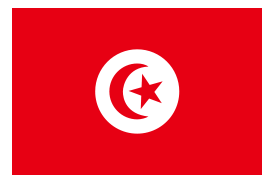Language/Tunisian-arabic/Grammar/Negation
Hi Tunisian Arabic learners! 😊
In this lesson, we will learn about negation in Tunisian Arabic. Negation is an important aspect of any language as it allows us to express what is not happening and what we do not want to happen. Learn how to negate sentences and develop your language skills with our cultural information and interesting facts. Don't hesitate to practice with native speakers! You can find them on Polyglot Club and ask them any questions. Let's get started with the basics! 😎
Negation in Tunisian Arabic[edit | edit source]
Negation in Tunisian Arabic works by adding the word "مش" (méchi) before the verb. It is similar to the French word "ne... pas". The word "مش" (méchi) means "not" and its placement is really important because it changes the whole meaning of the sentence. Here's an example:
| Tunisian Arabic | Pronunciation | English |
|---|---|---|
| مش درتش الشاي | méchi dartch ech-chaï | I did not make tea |
In Tunisian Arabic, we also use "ما" (mâ) to negate sentences. "ما" (mâ) means "not" as well, and it is used in different contexts. For instance, we use "ما" (mâ) before adjectives and nouns. Here's an example:
| Tunisian Arabic | Pronunciation | English |
|---|---|---|
| ما الطقس حامي | mâ et-taqs hami | The weather is not hot |
The Placement of Negation Words[edit | edit source]
In Tunisian Arabic, the negation word "مش" (méchi) should be placed before the verb in the sentence. However, there are some exceptions. For example, when we conjugate the verb in the past tense, "مش" (méchi) needs to be placed after the subject pronoun and before the auxiliary verb "كان" (kân) which means "was". Here's an example:
- Person 1: شنوا جاك اليوم؟ (chnoua jâk el-yom?) What did you get today?
- Person 2: مش كانش جاي (méchi kânesh jây) I did not get anything
Double Negation[edit | edit source]
We use double negation in Tunisian Arabic to emphasize our point, even though it is grammatically incorrect. We use the word "ما" (mâ) twice, for example, "ما ما" (mâ mâ) or "مش ما" (méchi mâ).
| Tunisian Arabic | Pronunciation | English |
|---|---|---|
| ما ما يحكيش | mâ mâ yehkiš | He does not say anything (emphasized) |
| مش ما نحبهاش | méchi mâ nahebhaš | We don't like it at all |
Examples[edit | edit source]
Here's a dialogue to illustrate how to negate sentences in Tunisian Arabic:
- Person 1: شنوا عندكش هذاك الشي؟ (chnoua ândkéch héthék ech-chi) What do you have this thing? (informal)
- Person 2: مش عنديش والله (méchi ândich wallâh) I don't have it, swear to God.
Conclusion[edit | edit source]
Negation is an important aspect of Tunisian Arabic grammar, and it allows us to express negations to convey what we do not want to happen. In Tunisian Arabic, we use "مش" (méchi) before verbs to negate sentences, whereas "ما" (mâ) is used before adjectives and nouns. Make sure to use the right placement of negation words as it changes the whole meaning of the sentence. To improve your Tunisian Arabic Grammar, you can also check out our Grammar section on the Polyglot Club website. Don't hesitate to practice with native speakers and join the Tunisian Arabic community!
➡ If you have any questions, please ask them in the comments section below.
➡ Feel free to edit this wiki page if you think it can be improved. 😎
Sources[edit | edit source]
Finished this lesson? Check out these related lessons: Past Participle in Tunisian Arabic, Numbers in Tunisian Arabic, 0 to A1 Course & Adjectives.

